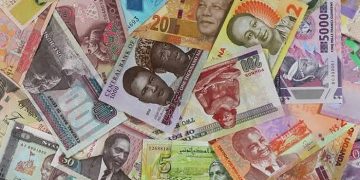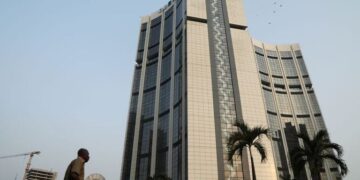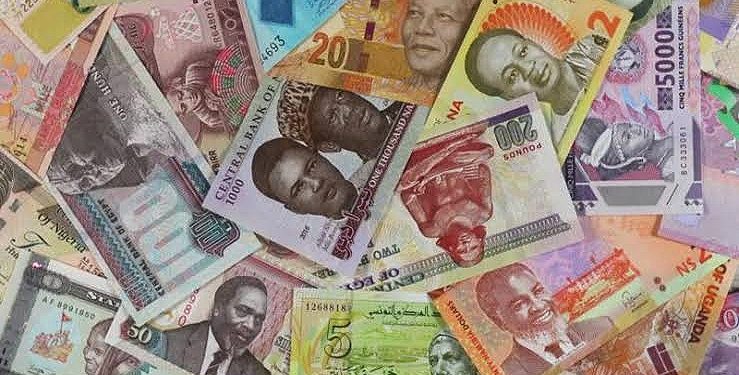By John Ikani
In a continent of 54 states, less than 10 countries have the capacity to print their own currencies or mint their own coins, decades after independence.
To simply put, at least 40 African countries print their money overseas, mostly in Europe (UK, France and Germany) and North America, raising questions about self-sufficiency.
Only a handful of African countries, like Nigeria, Morocco, Kenya, Algeria, South Africa, the Democratic Republic of Congo, Egypt, Sudan, and Zimbabwe have enough resources to print their own currencies or mint their coins. They sometimes supplement production with imports.
More about countries with printing capabilities
Nigeria:
In Africa’s most populous state, Naira notes and coins are printed or minted by the Nigerian Security Printing and Minting (NSPM).
The West African state sometimes supplements production with imports from other overseas printing and minting companies. All notes and coins are issued by the Central Bank of Nigeria (CBN).
Morocco:
Up in the North Western corner of Africa, the Dirham is the official currency of the Kingdom of Morocco. It is printed by the Bank al-Maghrib.
Kenya:
In the East African Community, Kenya is one of just two nations that print their money. The Kenyan banknotes (Kenyan Shilling) are printed in Nairobi by security printer De La Rue.
It would be interesting to note that the Central Bank of Kenya on 31 May 2019, issued a new family of banknotes without the portraits of known Kenyan individuals, as mandated by the revised Constitution of Kenya of 2010.
Algeria:
Also situated in North Western Africa, Algeria is demonstrating self-sufficiency like her neighbour Morocco.
The Algerian Currency known as the Dinar (DZD) is printed by ‘Banque d’Algérie,’ the Algerian Central Bank.
South Africa:
In Southern Africa, a decision by the South African Government to print South African currency locally led to the establishment of the South African Bank Note Company in 1958.
The company which is a joint venture between the South African Reserve Bank and Bradbury Wilkinson, has its factory situated in Pretoria.
DR Congo:
The Democratic Republic of Congo and Kenya (already discussed above) are the only East African Countries that produce their own currencies at home.
The Congolese Franc is the currency of the DRC, and the Banque Centrale du Congo (Central Bank of the Congo), is responsible for issuing and printing the Country’s Currency.
Egypt:
The Central Bank of Egypt has a printing house which was established in 1967, culminating the efforts of the Central Bank of Egypt (CBE) over the years, allowing the CBE to print money (Egyptian Pound) locally instead of abroad.
Sudan:
In Sudan, the Central Bank of Sudan and Sudan Currency Printing Press are in charge of printing the Sudanese Pound.
The Sudan Currency Printing Press is a private enterprise of limited liability established in May 1994 in accordance with the 1925 company law.
Zimbabwe:
Zimbabwe temporarily stopped printing its currency in April 2009 as it resorted to using currencies of other countries until it ultimately settled for the United States dollar by the end of that year.
2019 was the year when the Zimbabwean government announced the resumption of money printing and reintroduction of the ‘Zimbabwe Dollar,’ and decreed that all foreign currency was no longer legal tender.
Countries without printing capabilities
On the flip side, countries like Ethiopia, Libya and Angola — along with 14 other countries — place orders from British banknote printing giant De La Rue.
Furthermore, six or seven other nations, including South Sudan, Tanzania and Mauritania, are said to print theirs in Germany’s Giesecke+Devrient.
At the same time, most French-speaking African countries are known to print their money with France’s central bank and with the French printing company Oberthur Fiduciaire.
What prompts them to outsource their currency production?
Outsourcing currency production comes at a huge cost for African nations.
According to Deutsche Welle [DW]: “since these countries usually order millions of notes to be carted in containers, they usually have to pay hefty shipping fees.”
DW cited an example with Gambia which outsources its printing to UK companies with shipping costs racking up a high bill of £70,000 (€84,000, $92,000).
This explains why a delegation from The Gambia visited the Nigerian Central Bank in July 2021, asking if the Gambian Dalasi could be ordered from its West African neighbour, thereby incurring lesser costs.
It is instructive to note that while Gambia can print her money in-country, it makes economic sense for the nation to outsource production. It is for the same reason other African countries tread the same path, thus dismissing the argument of self-sufficiency.
Mma Amara Ekeruche from the African Center for Economics Research explained this better to DW. According to her: “When a country’s currency is not in high demand — and not used globally like the US dollar or the British pound — it makes little financial sense to print it at home due to the high cost involved.”
She went on to note that money-printing machines usually churn out millions of notes at a time. As a result, countries with smaller populations, like The Gambia or Somaliland, would have more money than they needed if they printed their own.
“If a country prints one banknote for €10 at home and sees that it can print it for about €8 abroad, why would they incur more costs? It won’t make sense,” Ekeruche explained.
The article concludes by noting that while economic sense abounds in outsourcing the printing of currency, African nations should strive to domicile the activity in-continent.
Theoretically, African countries could choose those with printing capabilities since there’s likely some idle capacity, just like Gambia’s proposed partnership with Nigeria.


































